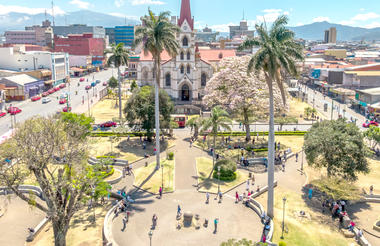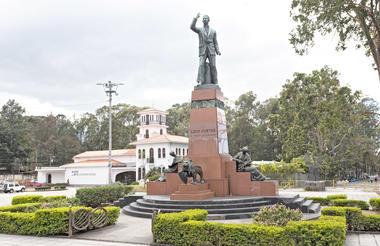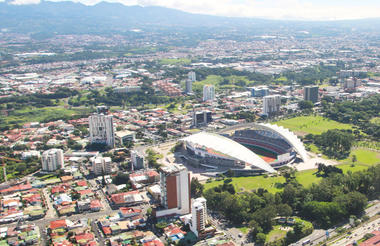Visitors to the Republic of Costa Rica will find that despite its small size, the country has an incredible number of attractions and activities to offer. Five per cent of the world’s biodiversity can be found within Costa Rica’s borders and great efforts have been made to preserve this rich resource; protected national parks make up almost 25% of the land – more than any other country in the world. From fishing and surfing to white water rafting and exploring volcanic regions, Costa Rica is the perfect playground for nature lovers and adventures seekers alike.
San Jose, der seinen Einwohnern liebevoll als „Chepe“ bekannt ist, liegt im Herzen von Costa Rica und beherbergt fast zwei Drittel der Bevölkerung des Landes. Mit wenigen Gebäuden, die über 100 Jahre alt sind, ist die bergige Hauptstadt relativ modern im Vergleich zu ihren lateinamerikanischen Gegenstücken, hat aber immer noch eine bedeutende Menge an Kultur, Kunst und Geschichte zu entdecken. Mit einer Reihe von Theatern voller Costa-Rica-Kultur, Museen, die die größte Sammlung amerikanischer Jade der Welt umfassen, und Straßen mit hellen Wandmalereien und bemalten Bussen, ist San Jose eine eklektische Stadt, die darauf wartet, erlebt zu werden.
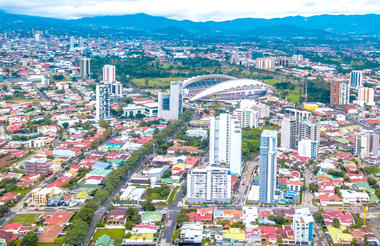


Resting at the confluence of the Rio Madre de Dios and Pacuare rivers, Barra de Pacuare is set on the eastern coast of Costa Rica. This natural wilderness area is the most unspoilt sector of the Tortuguero Canals in the Caribbean of Costa Rica. The landscape is blanketed in tropical rainforest traversed by a labyrinth of winding rivers and swamps. Barra de Pacuare is surrounded by a collection of sea turtle conservation areas, where visitors can learn about these magnificent sea creatures in their natural habitats. Enjoy a scenic boat cruise down the waterways, join a guided excursion into the wild landscape, and spot an array of abundant wildlife. Don’t miss the opportunity to explore the beautiful Pacuare Reserve, which is one of the most important nesting sites for endangered leatherback sea turtles in the country.



Once the most important river port of Costa Rica, this quaint market town lies on the confluence of the Rio Sarapiqui and Rio Puerto Viejo in the northeastern part of the country. Visitors are drawn to the area for its natural beauty - awe-inspiring tropical rainforests beckon to be explored. Enjoy sublime hiking, excellent birdwatching, and riverboat tours that give visitors the chance to see toucans, monkeys, sloths, and crocodiles in their natural habitat. Alternatively, visitors can take in the abundant scenery and wildlife on horseback, while thrill-seekers can experience the adrenaline-fuelled activities of kayaking, white water rafting, and zip-line forest canopy tours. Gain insight into local ancient traditions with a visit to the fascinating Museum of Indigenous Cultures, filled with musical instruments, masks, and shamanic healing tools.



Situated near the Nicaraguan border within northern Costa Rica, the remote Cano Negro Wildlife Refuge forms part of the Arenal Huetar Norte Conservation Area. It is a thrilling off-the-beaten-track destination known for its lush landscapes featuring countless waterways, dense jungles and shallow wetlands. A wondrous playground for nature lovers and adventure seekers alike, activities such as boating, rafting, zip-lining, fishing, kayaking, horse riding and rappelling down waterfalls are in abundance. Commonly spotted wildlife includes jaguar, capuchin monkey, bull shark, alligator, black river turtle, white ibis and white-tailed deer. It is well worth venturing off the well-trodden tourist path to visit this fantastic refuge and its surrounding scenic landscapes.



An eco-tourists heaven, La Tigra enjoys an idyllic setting, at the eastern edge of the Children's Eternal Rainforest, in the Alajuela Province of Costa Rica. The accompanying jungle is a dense, abundant world of plants and animals, including 120 mammal species, 440 bird varieties and 700 types of butterflies. Visitors can go hiking, ziplining, or canopy bridge walking among the sky-scraping, thick trees, which reach 21 metres in height. Animal lovers will be delighted in the chance to spot so many, and the forest is mainly known for its big cats - especially female ocelots and pumas with cubs who find a safe haven here. Other highlights include waterfalls, river rafting lessons, and the opportunity to volunteer at the wildlife rescue centre or take a traditional cooking class.
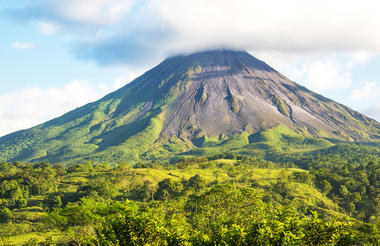
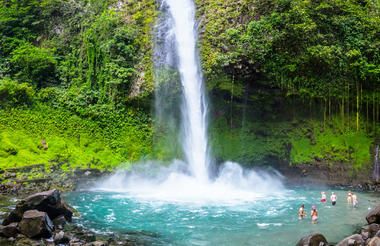
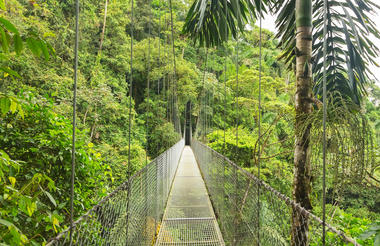
In the outskirts of northern Puntarenas, Costa Rica, lies Tárcoles—a small town with a surprising range of indoor and outdoor activities, set amidst captivating fauna and unique wildlife. The town, parallel to the ocean, boasts a million-dollar view. Explore Carara National Park for an adrenaline-pumping experience with American Crocodiles. The Waterfall Manatial de Auga Viva, one of Costa Rica's largest waterfalls at 200m, promises adventure through steep terrain with views of local beaches and vibrant wildlife. Tárcoles, near Jacó, provides access to world-class surf beaches, and canopy tours offer breathtaking aerial views through tram rides or exhilarating zip line expeditions.



Dominical liegt im Süden von Costa Rica, an seiner wunderschönen südwestlichen Pazifikküste, und ist ein malerisches Stranddorf, das für sein hervorragendes Surfen bekannt ist. Es bietet einige beeindruckende Wellen, die es bei Surfern beliebt machen, die aus allen Teilen der Welt hierher strömen. Dieses Dorf ist von den üppigen, mit Dschungel bewachsenen Ausläufern des Talamanca-Gebirges umgeben und bietet malerische Landschaften mit verschiedenen Flussmündungen, Mangroven, Sümpfen und steilen Klippen, die ins Meer stürzen. Besucher können die langen schwarzen Sandstrände genießen, Delfine in der Brandung beobachten und den Marino Ballena National Park besuchen, um einige der besten Wale in der Gegend zu beobachten. Verpassen Sie nicht die Gelegenheit, zu den herrlichen Nauyaca-Wasserfällen zu wandern. Zu den weiteren beliebten Aktivitäten gehören spannende Canopy-Touren, Wandern, Reiten, Surfen, Angeln, Seekajakfahren, Vogelbeobachtung und Wildbeobachtung.



Wie zuvor beschrieben
